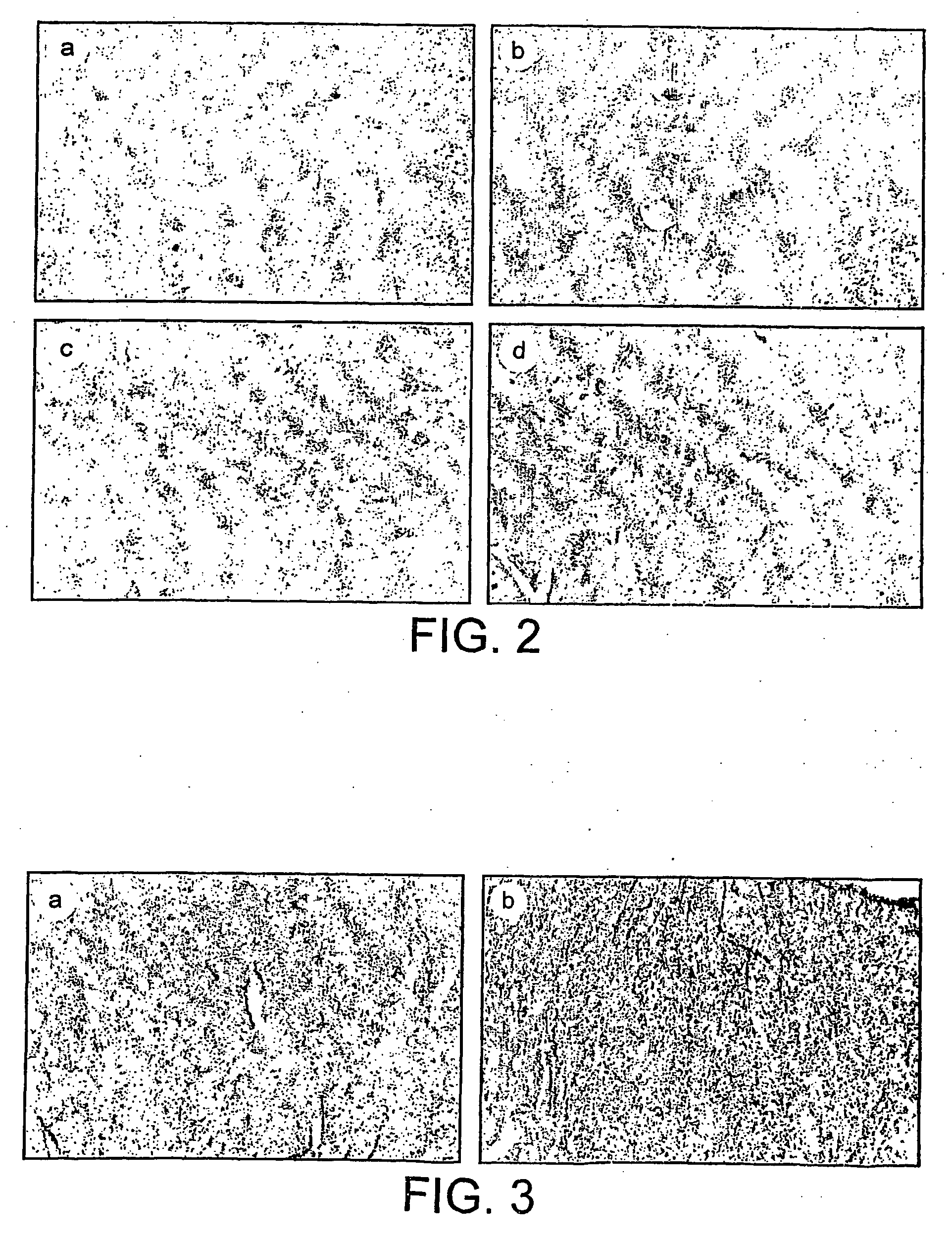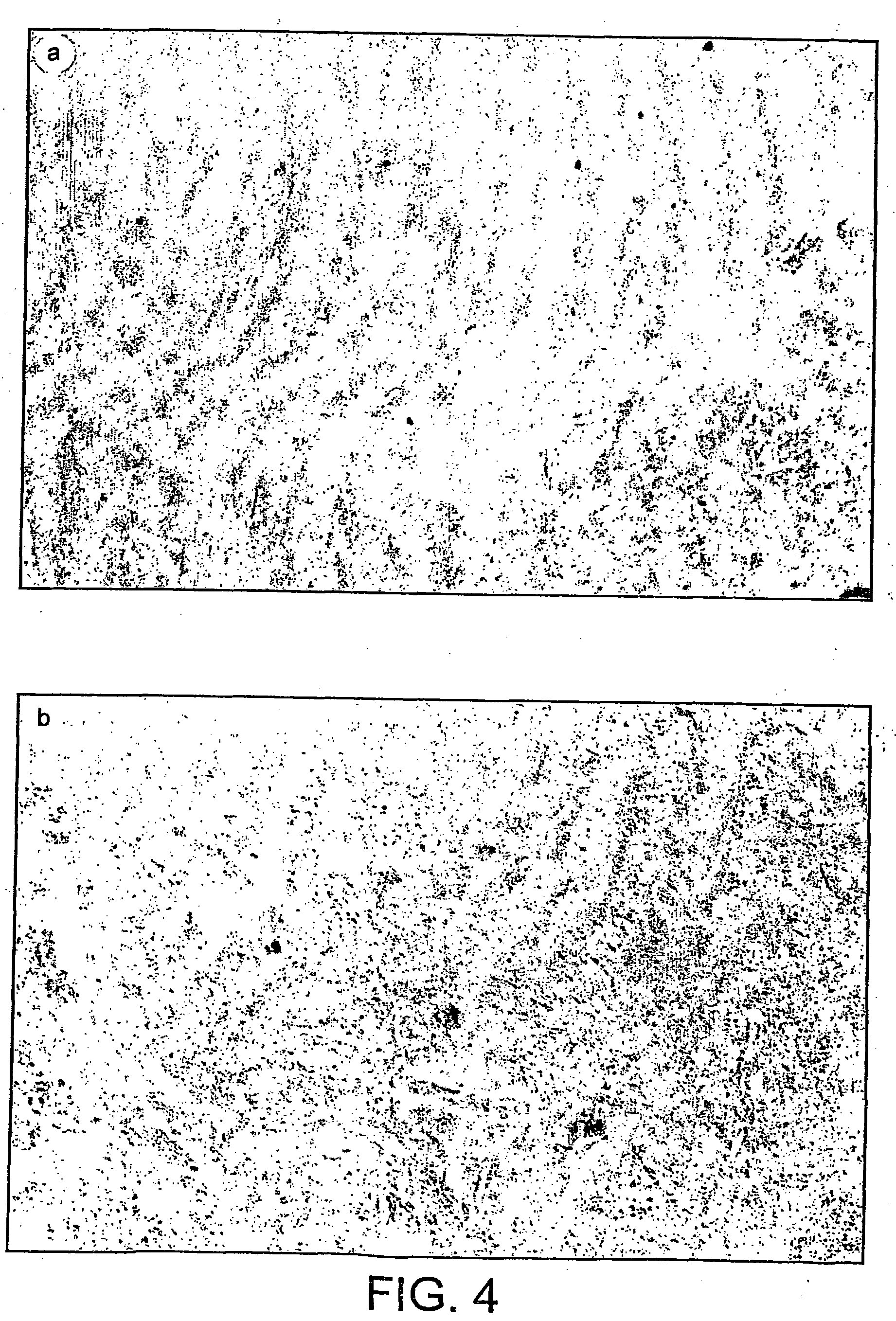Method of treating neurological diseases
a neurological disease and treatment method technology, applied in the field of neurological diseases, can solve the problems of reducing longevity, affecting life quality, and no treatment which prevents or reverses the course of the disorder
- Summary
- Abstract
- Description
- Claims
- Application Information
AI Technical Summary
Benefits of technology
Problems solved by technology
Method used
Image
Examples
example 1
Vitamin A Depletion Induces Motor Neurone Degeneration in Adult Rats
[0155] This example shows that a dietary retinoid defect gives rise to a downregulation of retinoic acid receptor α expression and there is motor neurone degeneration.
[0156] Weaned rats (Wistar) are fed on a normal diet (controls) or a commercially available vitamin A-free diet (Special Diet Services) ad libidum. After 6 months of a retinoid deficient diet the rats are distinguished from normal fed rats by muscle atrophy and hindlimb retraction when held by the tail (FIGS. 1a &b). These phenotypes are more severe after 1 year of a retinoid deficient diet (FIG. 1c).
[0157] Rats are killed by perfusion with 4% paraformaldehyde / 0.5% glutaraldehyde and the tissues prepared for in situ hybridisation and immunohistochemistry. HPLC measurements of liver tissue show that rats on a vitamin A-free diet are vitamin A-depleted after 6 months and virtually vitamin A-deficient after 1 year.
[0158] In situ hybridisation and immu...
example 2
Components of the retinoid signalling pathway are perturbed in the neurones of motor neurone disease patients
[0159] This example shows the defects in the retinoid signalling pathway in the motor neurones of patients suffering motor neurone disease.
[0160] Post-mortem lumbar spinal cord tissue is obtained cases of spontaneous motor neurone disease and age matched controls. The tissue is fixed in 4% PFA, wax embedded and 10 μM sections cut. The amount of motor neurone loss is assessed by counting the total number of motor neurones. In diseased patients there are fewer neurones compared to the non diseased age matched controls.
[0161] In situ hybridisation is carried out as described by Corcoran et al (2000) using the rat islet-1, mouse RARα and mouse raldh-2 probes. The number of positive motor neurones is counted on each whole chord section.
[0162] In situ hybridisation shows that there is a decrease in the number of islet-1 motor neurones in the diseased compared to the non-disease...
example 4
Modulation of Retinoid Signalling—Addressing Alzheimer's Disease and Related Disorder(s)
[0230] Clinical properties of Alzheimer's disease are addressed, and the involvement of retinoid signalling is demonstrated.
[0231] Rats are maintained on a retinoid deficient diet as in the above examples.
[0232] Brains are sectioned and examined for the expression of beta amyloid using anti rabbit Anti-beta-amyloid 1-40, Sigma
[0233] At six months of a retinoid deficient diet there appears to be no detectable difference between the retinoid deficient rats and the normal rats. At one year of age, retinoid deficient rats show an increase in the amount of beta amyloid (FIG. 13 B and C) compared to the control (FIG. 13A). In at least one case amyloid is apparent in the blood vessels (FIG. 13 B / C) as well as the neurons.
[0234] It is demonstrated which retinoic acid receptor is deficient in the rats. At six months of age there is a decrease in the expression of RAR alpha in the cholinergic neurons ...
PUM
| Property | Measurement | Unit |
|---|---|---|
| Acidity | aaaaa | aaaaa |
| Cell angle | aaaaa | aaaaa |
| Responsivity | aaaaa | aaaaa |
Abstract
Description
Claims
Application Information
 Login to View More
Login to View More - R&D
- Intellectual Property
- Life Sciences
- Materials
- Tech Scout
- Unparalleled Data Quality
- Higher Quality Content
- 60% Fewer Hallucinations
Browse by: Latest US Patents, China's latest patents, Technical Efficacy Thesaurus, Application Domain, Technology Topic, Popular Technical Reports.
© 2025 PatSnap. All rights reserved.Legal|Privacy policy|Modern Slavery Act Transparency Statement|Sitemap|About US| Contact US: help@patsnap.com



